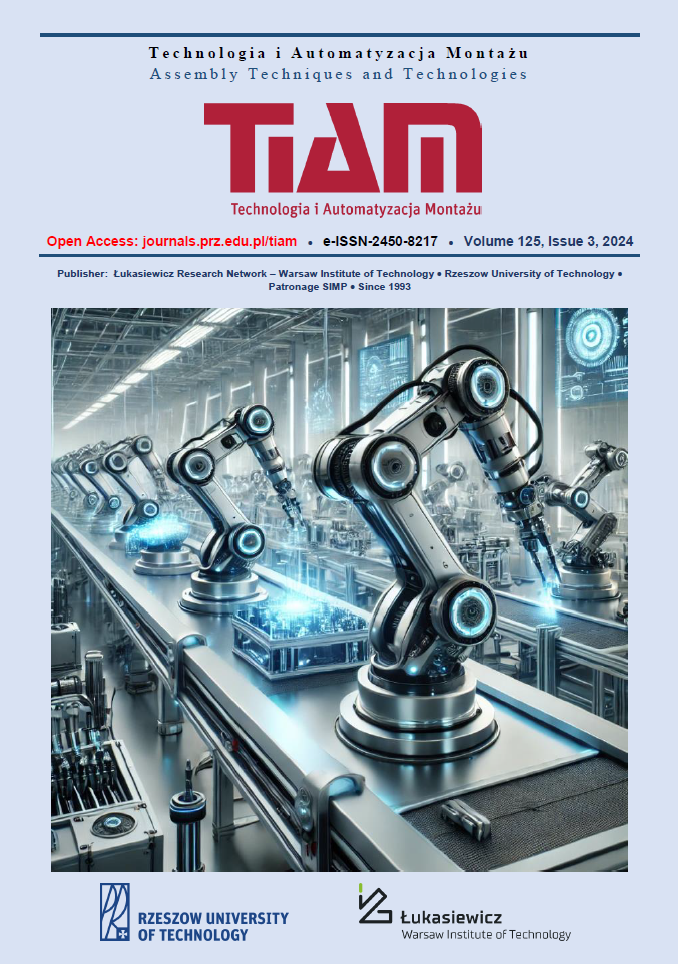Abstract
This publication describes the effects of work on the project no. POIR.01.01.01-00-1029/17-00. Its aim was to develop and demonstrate a technological line for the assembly and testing car dampers. The implementation of the project results took place in the own activities of ELPLC S.A. under Priority Axis I, the Smart Growth Operational Program 2014-2020 - Support for R&D work by enterprises. The commencement of work on the project was also the result of direct experience in the construction of machines and lines for OEM and Tier1 automotive industry clients.
References
Czop P., Sawik D. (2011). A high-frequency first-principle model of a shock absorber and servohydraulic tester (Mechanical Systems and Signal Processing 25(6), August 2011; pp. 1937–1955).
Duym S., Steins R., Reybrouck K. (1997) Evaluation of shock absorber models, Vehicle System Dynamics (International Journal of Vehicle Mechanics and Mobility 27(2)/1997; pp. 109–127).
Farjoud A., Ahmadian M., Craft M., Burke W. (2012). Nonlinear modeling and experimental characterization of hydraulic dampers: effects of shim stack and orifice parameters on damper performance, (Nonlinear Dynamics, Vol. 67, Issue 2, January 2012, pp. 1437–1456).
Ferdek U., Łuczko J. (2012). Modeling and analysis of a twin-tube hydraulic shock absorber, (Czasopismo Techniczne, 2-M/2012, pp. 627–638.)
Gardulski J., (2009). Metody badań amortyzatorów samochodów osobowych, (DIAGNOSTYKA’ 3(51)/2009)
Lang H.H., (1977). A study of the characteristics of automotive hydraulic dampers at high stroking frequencies, The University of Michigan, 1977
Shelton, Ch., (2017). Then, Now, and Forever (Hot Rod, March 2017, pp.16-29).
Sikora M., (2017). Pomiary drgań i ciśnienia w amortyzatorze hydraulicznym w zawieszeniu samochodowym, (Technical Transactions 4/2017, pp. 210-217)
Persistence Market Research (2023). Automotive Shock Absorbers Market Outlook (2023 to 2033). https://www.persistencemarketresearch.com/market-research/shock-absorbers-market.asp

